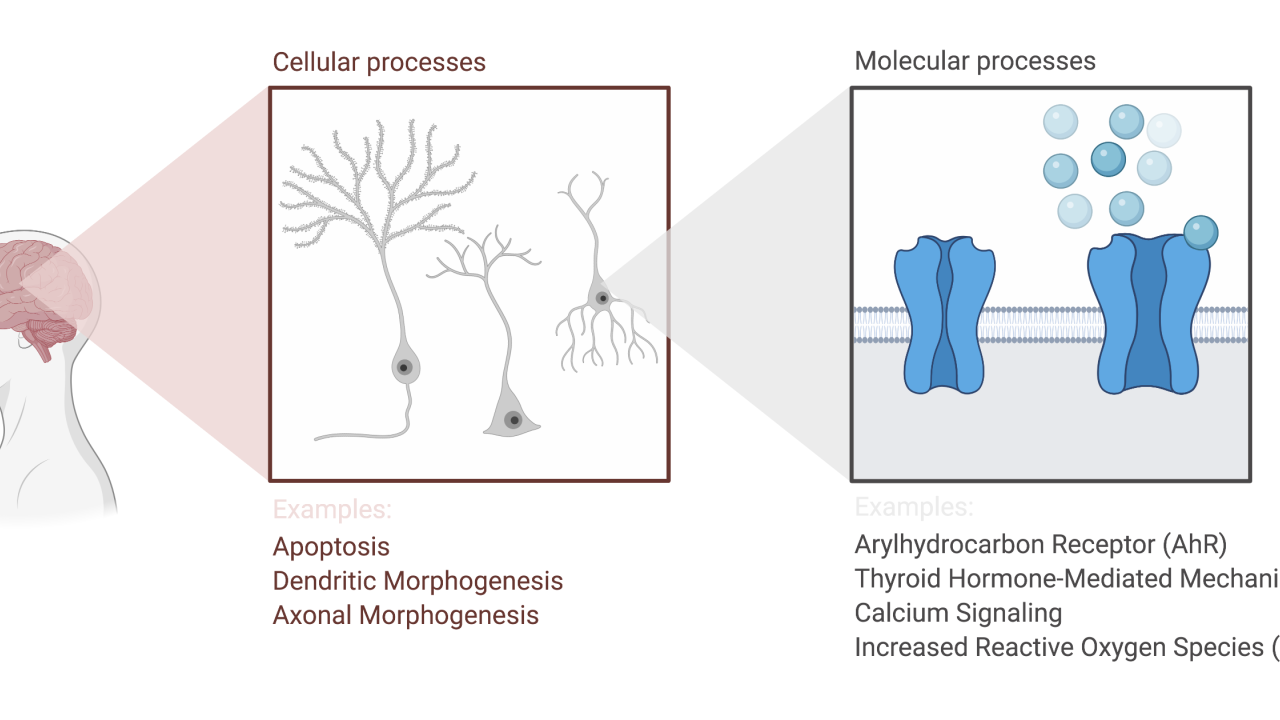
The Original “Forever Chemicals”
The Original “Forever Chemicals”
by Bianca Yaghoobi
Polychlorinated biphenyls (PCBs) continue to be an environmental health concern after many thought the problem had been solved.
The buzzword “forever chemicals” has appeared in many recent headlines after contamination events involving per- and polyfluoroalkyl substances (PFAS), among them Teflon, that have devastated communities and caused major health concerns. PFAS belong to the group of manmade persistent organic pollutants (POPs), which are compounds resistant to environmental degradation and bioaccumulate with potential harmful effects on human and environmental health. They are referred to as “forever chemicals” due to the long time they take to break down in the environment. Long before PFAS were even developed, however, another class of compounds belonging to POPs, polychlorinated biphenyls (PCBs), made headlines as the original “forever chemicals.”
What are PCBs and should we still be concerned about them?

Chemical structure of PCBs.
PCBs are a group of 209 related structures of chlorinate substituents on biphenyl rings. They persist in the environment, cycling between air, water, and soil. Many PCBs are readily soluble in fats and tend to accumulate in fatty tissues; thus, they bioaccumulate up the food chain. PCBs were produced worldwide in large quantities for industrial and commercial purposes beginning in the late 1920s. However, as early as a decade later and with mounting evidence in the 1960s and 1970s, PCBs were shown to increase risk of cancer in humans. This prompted a ban on PCB production in the U.S. in 1979 and later worldwide by the Stockholm Convention in 2001. Based on cancer as the endpoint of concern, further research was able to identify “safe” levels of PCBs in the environment and human food supplies. When PCBs that were part of the synthesized industrial mixtures – also known as legacy PCBs – decreased in human tissues and the environment, many believed the PCB problem was largely solved. However, novel PCBs that were not part of those mixtures have now been detected in human tissue and the environment. They constitute a significant proportion of contemporary human PCB exposures as unintentional byproducts of pigment and dye production. Initial research into those PCBs has shown that they pose a significant risk to human health via mechanisms other than those on which regulatory decisions are currently based. And unfortunately, legacy PCB levels have also been increasing in the environment in the past decade, which is thought to be caused by release from aging equipment built before the PCB ban. The Centers for Disease Control and Prevention says most people have a measureable amount of PCBs in their body. This is especially concerning considering that research into negative health outcomes potentially caused by PCBs has been observed at very low exposure levels. The primary contemporary health concern of PCBs are their effects on the brain during development, which has been suggested to increase risk of neurodevelopmental disorders.
PCBs and Developmental Neurotoxicity: Mechanisms of Action
Epidemiological as well as preclinical studies have shown that the developing nervous system is much more sensitive to the neurotoxic effects of PCBs than the mature nervous system. Moreover, PCBs can be transferred from the mother to the child prenatally through the placenta or postnatally by secreting into breast milk. During neurodevelopment, cellular and molecular processes are tightly regulated and any disturbances in those processes can ultimately lead to abnormal neurodevelopmental outcomes that are irreversible. Recent studies suggest early life PCB exposures may increase the risk for autism spectrum disorder (ASD), attention-deficit/hyperactivity disorder (ADHD), and general cognitive impairment without a specific diagnosis.
Neurodevelopmental processes most notably altered by PCBs include their effects on neuronal apoptosis as well as axonal and dendritic morphogenesis. Neuronal apoptosis is a type of cell death and is a necessary process that is tightly regulated during development. Disruption of either the timing or the magnitude of apoptosis in a given brain region can affect the total cell number, and consequently, neuronal connectivity, resulting in deficits in higher-order function. Similarly, axonal and dendritic morphology are principal determinants of synaptic architecture. Axons transmit information from the neuron to other cells, while dendrites receive them. Any abnormalities in their structures, even subtle perturbations, are associated with altered neurobehavior. These neurodevelopmental processes are essentially controlled by their respective molecular processes inside the cells. There are many mechanisms postulated for the observed developmental neurotoxicity elicited by PCBs, and the most widely accepted include disruption of arylhyrdocarbon receptor (AhR) signaling, disruption of thyroid hormone-mediated mechanisms, modulation of neuronal calcium signals, and increased intracellular levels of reactive oxygen species (ROS). All of these biological activities can alter neuronal cell death as well as neuronal morphogenesis during development.

Disruption of cellular and molecular processes via PCBs that can cause neurobehavioral deficits/abnormalities.
Taken together, these altered molecular and cellular processes due to PCB exposures have been shown to translate to neurobehavioral abnormalities such as increased hyperactivity, social deficits, cognitive impairment and executive dysfunction. Although recent research has shed some light on PCB developmental neurotoxicity and the mechanisms by which PCBs interfere with neurodevelopment, many critical questions remain about the importance of each postulated molecular mechanism of PCB-mediated neurodevelopmental disturbance. Nevertheless, as the “forever chemicals,” PCBs are not only persistent in the environment and appear to virtually stick around forever, the changes they can cause in developing children is also persistent and can change their brains forever.
Images in this post have been created with BioRender.com
